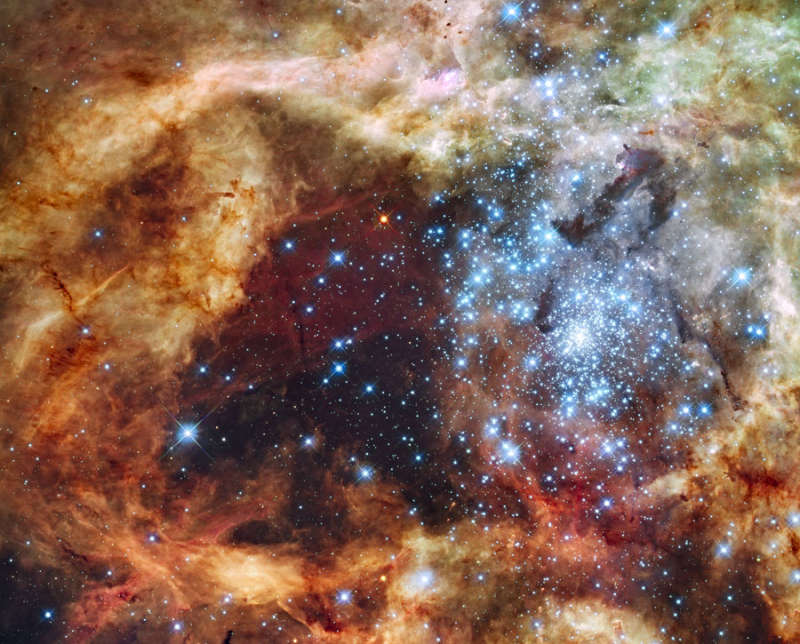
|
Credit & Copyright: NASA,
ESA, &
F. Paresce (INAF-IASF),
R. O'Connell
(U. Virginia), & the
HST WFC3
Science Oversight Committee
Explanation:
In the center of star-forming region
30 Doradus lies a
huge cluster
of the largest, hottest, most massive stars known.
These stars, known collectively as
star cluster R136,
were captured above in
visible light by the newly installed
Wide Field Camera
peering though the recently refurbished
Hubble Space Telescope.
Gas and dust clouds in
30 Doradus, also known as the
Tarantula Nebula,
have been sculpted into elongated shapes by powerful
winds and
ultraviolet radiation
from these hot cluster stars.
The 30 Doradus Nebula
lies within a neighboring galaxy known as the
Large Magellanic Cloud and is located a mere 170,000
light-years away.
Note: An APOD editor will review great space images on 2010 Jan. 14 in Houghton, Michigan.
|
January February March April May June July August September October November December |
| ||||||||||||||||||||||||||||||||||||||||||||||||
NASA Web Site Statements, Warnings, and Disclaimers
NASA Official: Jay Norris. Specific rights apply.
A service of: LHEA at NASA / GSFC
& Michigan Tech. U.
Based on Astronomy Picture
Of the Day
Publications with keywords: R 136 - Tarantula Nebula - LMC
Publications with words: R 136 - Tarantula Nebula - LMC
See also:
